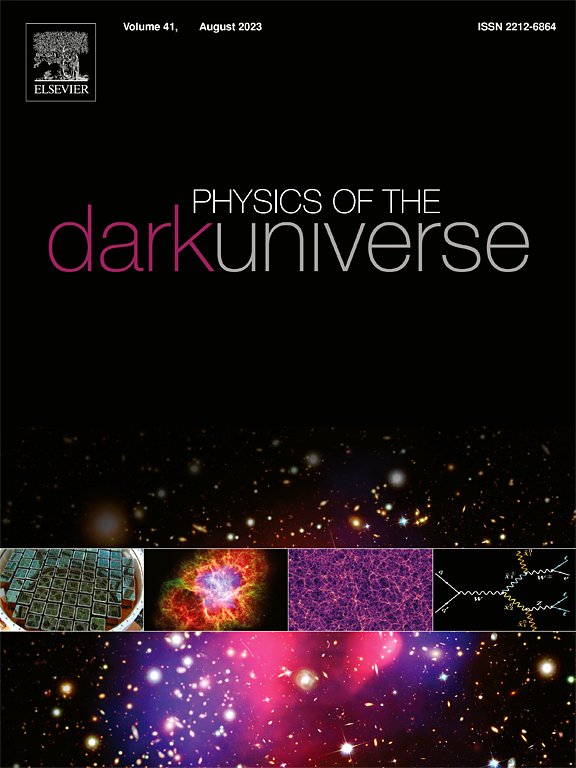Impact of dynamical dark energy on black hole dynamics in an accelerated expanding universe
IF 6.4
2区 物理与天体物理
Q1 ASTRONOMY & ASTROPHYSICS
引用次数: 0
Abstract
In this work, an interacting dark energy model is introduced for explaining the dynamical behaviour of our universe, where dark energy is evolved through continuous interaction with matter. Basing on this model, we have first computed the basic parameters like the density of dark energy, which is further utilized to illustrate the universe’s expansion dynamics. Our study suggests that the interacting nature of dark energy is sufficient to explain the observed accelerated expansion of present universe, if it is quintessence type. While the equation of state parameter () for quintessence ranges between 0 and , our analysis predicts that accelerating nature of universe’s expansion can only occur, if the present value of is less (more negative) than . It is also concluded that the universe’s expansion would undergo a decelerating phase in the early epoch and would shift to accelerated expansion, around , with representing the current age of our universe. Further, our model indicates that the accelerated expanding phase will continue for ever. Our focus also attributes to the mass evolution of Schwarzschild type black hole. In this context we consider the accumulation of energy-matter and the quantum mechanical Hawking evaporation as the active ingredients for evolution of black holes’ mass and found that accretion efficiency () creates different patterns of mass variations. Again, we have taken a look on the astrophysical constraints that affected the abundance of black holes and found that with increasing accretion efficiency, limits imposed on the black holes’ initial mass fraction would become more tightened.
加速膨胀宇宙中动态暗能量对黑洞动力学的影响
在这项工作中,引入了一个相互作用的暗能量模型来解释我们宇宙的动力学行为,其中暗能量是通过与物质的持续相互作用而进化的。在此模型的基础上,我们首先计算了暗能量密度等基本参数,进一步利用暗能量密度来说明宇宙的膨胀动力学。我们的研究表明,暗能量的相互作用性质足以解释观测到的当前宇宙的加速膨胀,如果它是精粹型的。虽然精粹的状态参数方程(γ φ)的范围在0和- 1之间,但我们的分析预测,只有当γ φ的现值小于(更负)- 0.7866时,宇宙膨胀的加速性质才会发生。它还得出结论,宇宙的膨胀将在早期经历一个减速阶段,并将转向加速膨胀,大约在0.6555到0之间,其中t0代表我们宇宙的当前年龄。此外,我们的模型表明,加速膨胀阶段将永远持续下去。我们的重点还在于史瓦西型黑洞的质量演化。在此背景下,我们认为能量物质的积累和量子力学霍金蒸发是黑洞质量演化的有效成分,并发现吸积效率(f)产生了不同的质量变化模式。再一次,我们研究了影响黑洞丰度的天体物理约束,发现随着吸积效率的提高,对黑洞初始质量分数的限制将变得更加严格。
本文章由计算机程序翻译,如有差异,请以英文原文为准。
求助全文
约1分钟内获得全文
求助全文
来源期刊

Physics of the Dark Universe
ASTRONOMY & ASTROPHYSICS-
CiteScore
9.60
自引率
7.30%
发文量
118
审稿时长
61 days
期刊介绍:
Physics of the Dark Universe is an innovative online-only journal that offers rapid publication of peer-reviewed, original research articles considered of high scientific impact.
The journal is focused on the understanding of Dark Matter, Dark Energy, Early Universe, gravitational waves and neutrinos, covering all theoretical, experimental and phenomenological aspects.
 求助内容:
求助内容: 应助结果提醒方式:
应助结果提醒方式:


